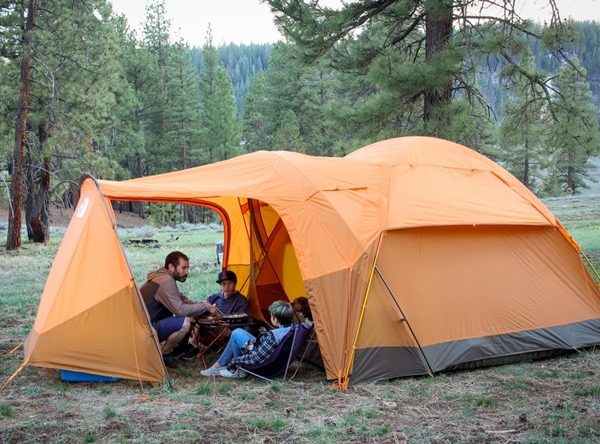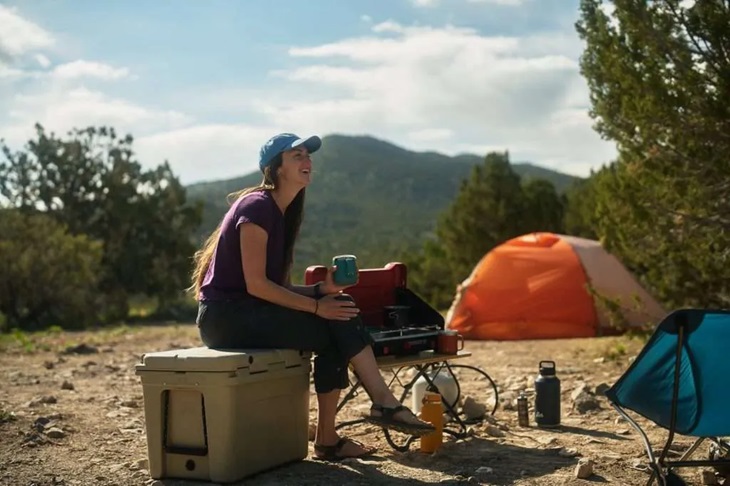12
Nov

A successful camping trip starts with packing the right gear to help you brave the elements. While you don’t need much to enjoy the outdoors, even the most minimalist campers need a few essentials; think food, shelter, and clothing. If your camping style resembles creating a cosy home away from home, you may want to include a few creature comforts.

Whether you are planning the maiden voyage in your brand-new tent or are a veteran camper, enjoy your camping trip more with durable backpacking equipment. When spending a weekend or longer away from home, it’s tempting to pack everything “just in case!” However, part of the beauty lies in the opportunity to appreciate nature’s simple beauty. We have narrowed down some essentials, nothing more and nothing less, so you may be ready for your next camping trip without being overburdened with needless gear.
Backpacks are some of the very few essentials every camper requires. When on the hunt for the right model take the length of your trip into account. Daypacks are perfect for day hikes and weekend trips. They are transportable and can support a load of 5 kilograms. Choose a model with a hip belt to properly distribute weight. Daypacks vary in size from 20 to 30 litres.
Large camping backpacks are available in 40L, 50L, and 60L capacities. A 40-50 L backpack may be appropriate for a weekend getaway, whilst a 60 L model is great for travels lasting a week or longer. Large packs are also ideal for adventure journeys. These backpacks feature larger straps and hip belts to aid with weight distribution and pain reduction.
On the other hand, longer and more challenging trips need you to carry more weight. Backpacks built for this purpose are often more durable and have a greater weight capacity. These expedition models have a weight capacity of 30 kg and are available in three sizes: 70, 80, and 90 litres.
The fear of not getting a good night’s sleep can keep some people from camping. A sleeping bag is essential backpacking equipment when sleeping outside. Prices and quality can vary greatly. Generally speaking, you should consider how warm your bag should be, what material is best, as well as your budget. Also, a high-quality sleeping bag should last a long time.
You need to quit bringing your bedroom pillow on camping trips. Choose a camping pillow instead. They pack light, can become dirty, and can be stuffed into a camping bag because most are lightweight and extremely collapsible.
Camping blankets are useful camping gear for both sleeping and wrapping yourself in on chilly mornings. However, if you’re thinking about ditching the sleeping bag, make a wise judgement first, as camping blankets aren’t as warm as zippered equivalents. However, in general, the best camping blankets are ideal for wrapping around anybody and everything, including dogs, for further cold-weather protection.
Choosing the right tent for any outdoor activity is essential. A robust tent ensures that you keep dry and comfortable and receive a nice night’s sleep. A tent should meet most of your camping demands and be long-lasting.
Rooftop tents, a relative newcomer to the camping industry, are improving in terms of design and comfort with each passing year. However, be wary of making a rushed purchase because you may end up with a tent that does not function as expected, such as a rack that does not sync with your vehicle or a tent that does not fit on your rack.
Canopy tents are steadily making their way into the most convenient camping gear for sale. It’s fair to say that, once erected, they soon become the kitchen and dining room at most campsites, and with good cause. A canopy tent can also be used in a variety of settings, including parks and beaches. Have a solid idea of how you intend to use yours, as some are made for commercial use (think farmer’s markets), while others are suited for taking around, such as those for camping or the beach.
Whether you want to flip a few hot dogs or a gourmet flank steak, a long pair of grilling tongs will do the job with ease—all while keeping your hands safe. When picking, the rubber grips on the sides provided a secure grip in the hand, while the stainless steel, scalloped, tapered tips readily grasped a variety of meals, including kabobs, flank steak, and even roly-poly hot dogs.
If you want to make pancakes in the morning over the campfire (or burgers for dinner), you’ll need something robust but agile enough to get the perfect flip. A fish spatula slides cleanly under pancakes, fish, and burgers; also, its agility makes it ideal for feeding oneself rather than feeding the fire. The stainless-steel blade is also easy and quick to clean by hand.

Coolers have experienced a not-so-quiet revolution in the camping kitchen. Insulation technology has greatly improved, as has the typical price of a cooler. But you don’t have to break the bank. Old-school hard coolers are ideal for camping, the back of a truck, or a park picnic. They can be easily hoisted, used as seats, and will most likely keep ice for a couple of days.
When considering soft coolers, keep portability in mind. These are ideal for camping, but they may also be used in the park, the beach, or a friend’s house. Soft coolers do not hold as much as regular coolers, but they make up for it when on the go.